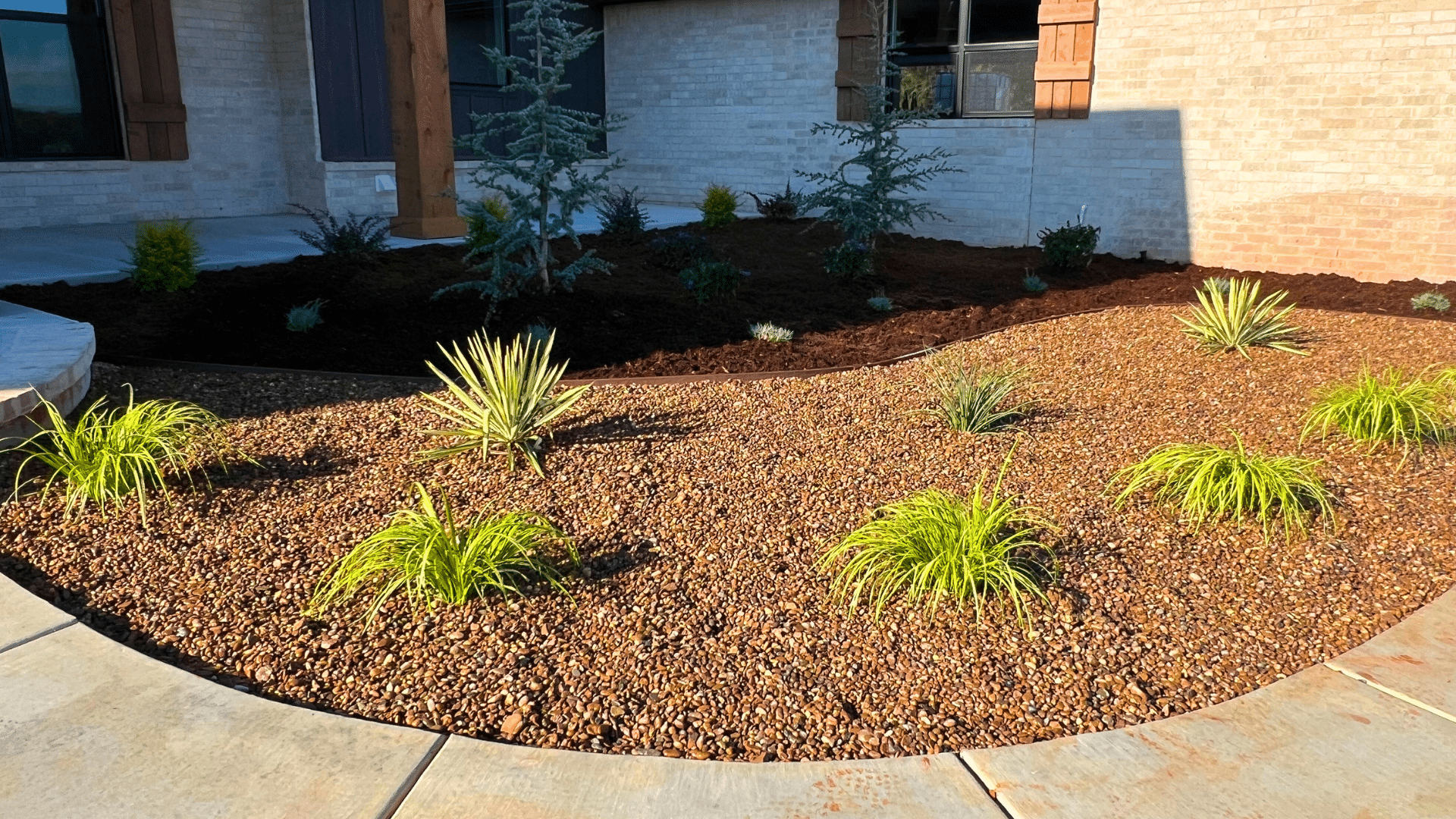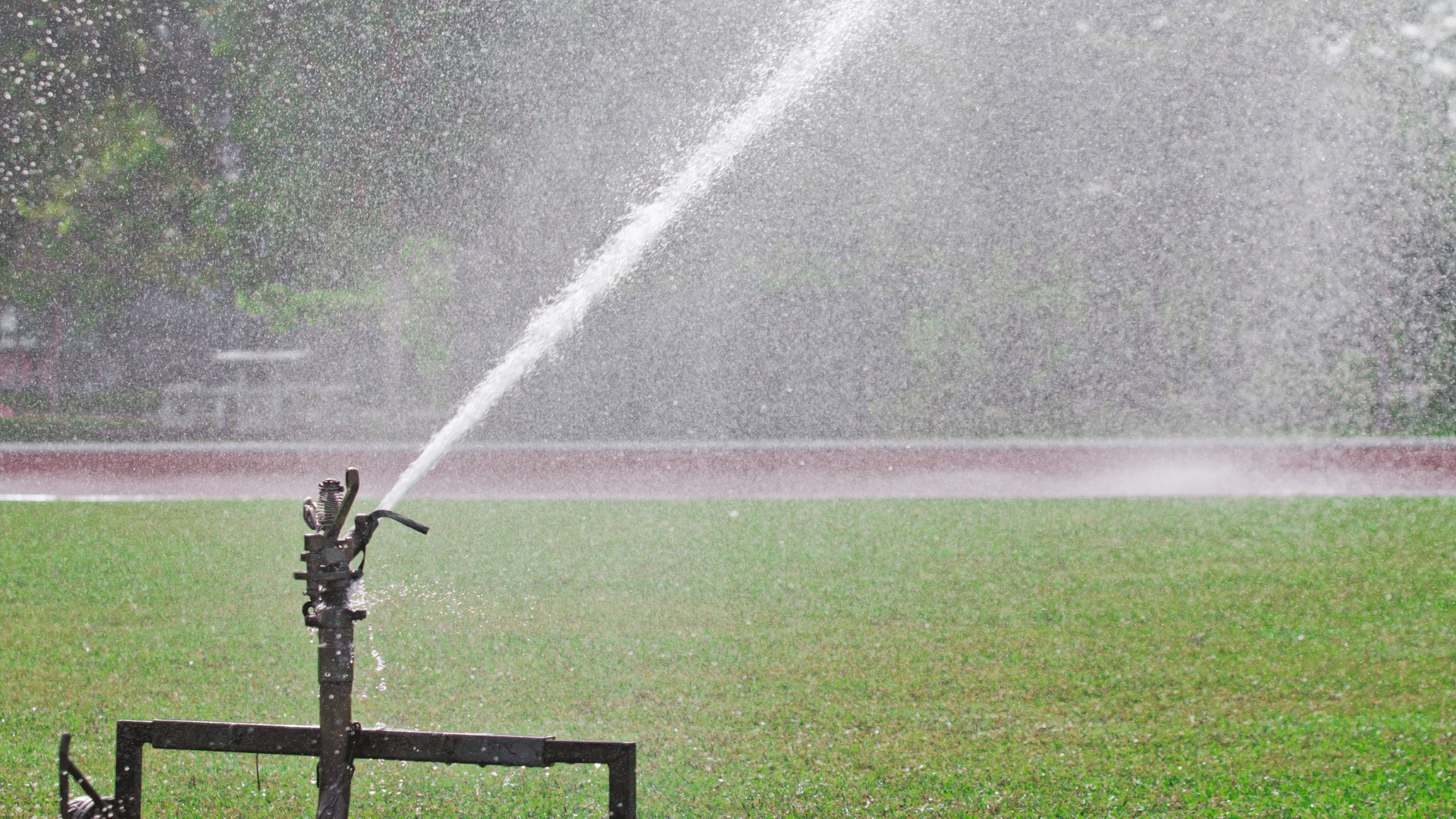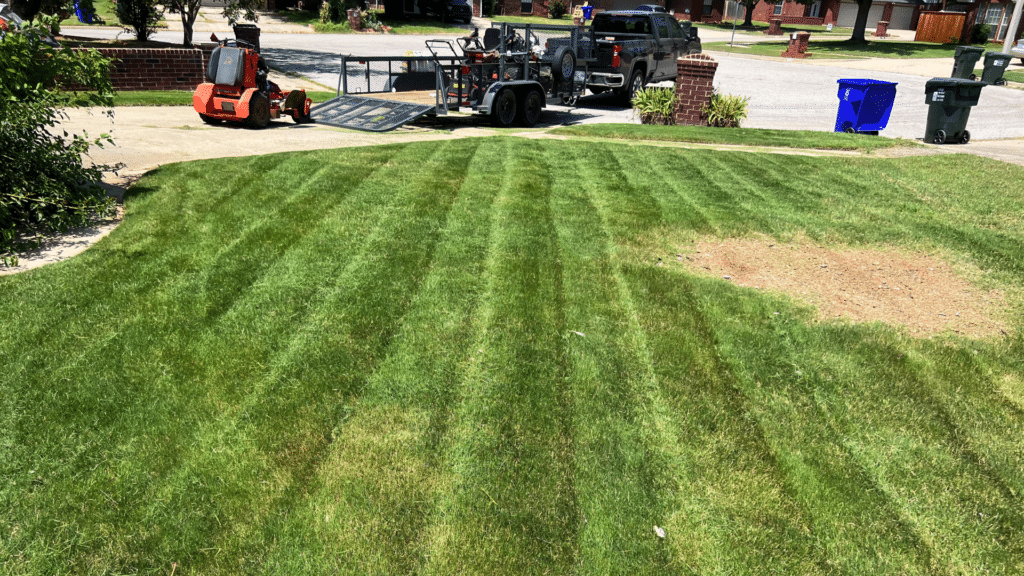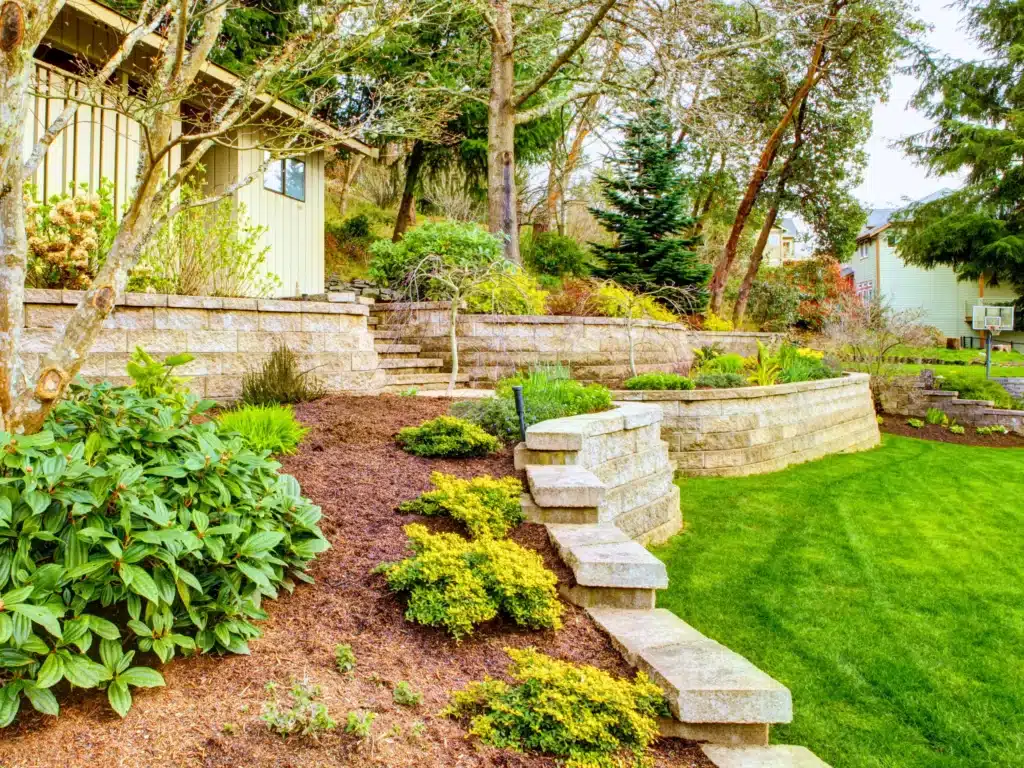Key Highlights
- Embrace Native Plants: Choose resilient native species that thrive in Oklahoma’s climate, minimizing the need for excessive watering and extra care.
- Water Wisely: Understand your soil’s moisture needs and avoid overwatering, which leads to shallow root systems and increases the risk of diseases.
- Timing is Key for Fertilizing: Avoid fertilizing too late in the season, as it encourages tender new growth vulnerable to frost damage. Early fall is generally a better time for most plants.
- Soil is Everything: Invest time in improving your soil with compost and mulch for better drainage, moisture retention, and overall plant health.
- Pruning Know-How: Learn when and how to prune different plant varieties to encourage healthy growth and avoid sacrificing next year’s blooms.
Understanding Oklahoma’s Climate for Yard Planning
Planning your yard is essential during Oklahoma’s ever-changing seasons. We have hot and humid summers, including droughts, plus cold and sometimes icy winters. This means we must choose our plants wisely and care for them well, especially in the first year. The growing season lasts from early spring to late fall, offering a good time for planting. Knowing how to deal with these seasons is key.
Elion Landscaping & Tree Service offers expert advice to help you create a low-maintenance yard that thrives in Oklahoma’s climate. Avoid common landscaping mistakes and discover how smart planning can save you time, effort, and resources while keeping your yard beautiful and low maintenance.
Impacts of Seasonal Changes on Your Landscaping
The beauty of Oklahoma shines brightly during the changes between its seasons. Each season brings new challenges and chances for your yard. When fall and cooler temperatures arrive, it’s time to prepare for the late winter. A little effort in cleaning up fallen leaves and foliage, trimming back plants that have finished blooming, and shielding delicate plants from possible winter damage can help your yard during the seasonal changes.
As early spring starts, new life appears, including flower buds and pansies. Trees and flowers burst into bloom, making the landscape bright and colorful. However, late frosts can still happen in spring. It’s important to watch out for these and protect your vulnerable spring blooms from sudden temperature drops.
To keep your yard looking great through all the seasons in Oklahoma, give it the right care at the right time. This will help it stay strong and beautiful all year long.
Selecting Plants Suited for Oklahoma Weather
To have a yard in Oklahoma that is easy to take care of, choose a variety of plants that grow well in the climate. Look for strong plants that can handle dry spells and the bright sun. It’s a great way to add a mix of plants that bloom at different times. This will give you color all through the growing season.
Native plants work great in Oklahoma gardens. They have adapted to handle all the weather changes. Consider adding plants like coneflowers, black-eyed Susans, yarrows, and salvias. These are low-maintenance and attract pollinators.
For areas that get full sun, think about plants like lantana, butterfly weed, and Russian sage as part of your landscaping for late summer. These plants love the heat. Make sure to pick a blend of trees, shrubs, and perennials. These don’t only look nice, but they also help create a healthy ecosystem in your yard.

Lawn Care Mistakes to Avoid
Proper lawn maintenance is key for a yard that needs less work. However, many homeowners make common mistakes. One big mistake is overwatering. This leads to shallow root growth. It also makes the grass more likely to get sick and less able to handle dry times and end up hurting your lawn.
Another error is mowing the lawn too short. This puts stress on the grass. It makes it easier for weeds, pests, and diseases to take hold. Learning the basics of lawn care can help you avoid these problems. In the end, this means a healthier lawn that needs less upkeep.
Consequences of Over or Under-Watering
Maintaining proper soil moisture is crucial for lawn health. Overwatering can suffocate roots by preventing oxygen from reaching them, leading to fungal diseases and root rot. Conversely, underwatering can cause drought stress, heat damage, and promote weeds.
Water deeply and less frequently to encourage strong root systems. Wilting blades indicate thirst, while bright green grass shows that the grass has enough moisture. To ensure proper watering, use a soil probe or your finger to check moisture levels. Finding the right balance will result in a healthier, low-maintenance lawn.
Common Mowing Errors That Cause Harm
Maintaining a green lawn requires more than just watering; mowing plays a key role. Scalping, or cutting grass too short, weakens it, inviting weeds, disease, and stress. Removing too much grass at once hinders growth and reduces the ability to absorb sunlight.
For a healthier, low-maintenance lawn, avoid cutting more than one-third of the grass blade. Proper mowing supports photosynthesis, strengthens roots, and improves drought resistance, keeping your yard looking fresh.
Plant Selection and Placement Mistakes
Choosing the right plants for your Oklahoma yard begins by knowing what conditions your site has. Soil drainage and rainfall are the most important things that many people forget. If you plant moisture-loving species in heavy clay soil that doesn’t drain well, it can cause root rot and lead to plant failure.
It’s also very important to match plants to the amount of sunlight your full sun areas get. Exterior lighting plays an important part in ensuring that plants thrive; the best thing about plants that need full sun is that they will struggle in shady spots. They may not bloom well and can also get sick easily.
Non-Native Plants That Struggle in Oklahoma
Planting non-native plants in your Oklahoma yard may seem appealing, but it can lead to problems. Many non-natives struggle with the intense sun, heat, and dryness of summer or lack the cold hardiness to survive winter. This results in damage or death.
Plants from cooler, humid climates might look good initially but often fail in Oklahoma’s challenging conditions. Before planting, research your choices and select species suited to the local climate. This thoughtful approach saves time, money, and the disappointment of watching unsuitable plants struggle.
Spacing and Sunlight Mistakes
Successful gardening requires more than choosing the right plants; proper spacing is key for a gardener. Overcrowding may look appealing but causes competition for sunlight, water, and nutrients; which stunts growth and invites pests and disease.
Consider each plant’s size and sunlight needs. Full-sun plants need space to spread, while shade-tolerant plants thrive in darker areas. In Oklahoma, spacing prevents stress from intense sun, promotes airflow, and reduces fungal risks. Giving plants room to grow strengthens roots and supports a healthier, low-maintenance garden.
Soil, Compost, and Fertilization Missteps
Healthy soil is key to a successful garden. Ignoring its needs is one of the most common mistakes. You should focus first on improving soil structure. Compacted soil can block drainage and stunt root growth. Incorporating organic matter, like compost, is a perfect time to improve soil health.
Fertilization is another area where people often make mistakes. Using too much nitrogen can result in lots of leaves but few blooms. It’s important to know what nutrients your plants need. This way, you can fertilize correctly. Checking your soil can help you find what nutrients are missing. It can also show you the right amount and type of fertilizer for the best plant health.
Over-fertilizing can cause “nutrient burn,” where excess salts damage roots, preventing them from absorbing water and nutrients. This results in brown leaf tips, wilting, and slowed growth.

Overwatering: How to Curve It
Conserving water is very important, especially in places like Oklahoma that can go through droughts. Using good irrigation methods helps to waste less water and supports healthier plants that can survive dry times. Here are some key tips:
- Water Deeply, Less Often: Water your plants less frequently but for longer periods. This helps roots grow deep and allows moisture to soak deep into the soil.
- Water Early in the Day: To avoid evaporation, water your plants in the morning when it is cooler. This makes sure that the water goes right to the plant roots.
- Mulch, Mulch, Mulch: Put a good layer of organic mulch around your plants. This keeps soil moisture, controls weeds, and helps keep the soil temperature steady.
Pest Control and Weed Management
Another tip to avoid mistakes for a low-maintenance yard is to focus on eco-friendly pest and weed control. This maintains healthy plant material. Skip harmful chemicals and opt for natural methods with lasting effects.
Introduce beneficial insects like ladybugs, lacewings, and praying mantises, which prey on pests like aphids and mites. To attract them, plant small-bloom flowers like yarrow, dill, and fennel, which offer food and shelter. Hand-pulling weeds and applying mulch are effective, chemical-free ways to suppress weed growth while protecting pollinators.
Organic options like insecticidal soap, neem oil, and diatomaceous earth also manage pests safely, supporting a healthier garden ecosystem.
Avoiding Overuse of Chemical Weed Killers
A weed-free lawn looks great, but protecting the environment is just as important. Overusing chemical weed killers can damage soil, harm pollinators, and wash into waterways. Fortunately, eco-friendly weed control methods can keep your yard beautiful without these risks.
Mulch is an effective, natural solution. It is always a good idea to apply a thick layer around plants to block sunlight, prevent weed growth, and retain soil moisture, which reduces the need for frequent watering. Regularly removing weeds before they seed also minimizes future outbreaks.
For expert help creating a low-maintenance, eco-friendly yard, contact Elion Landscaping & Tree Service. Let us help you protect your lawn and the environment while keeping your outdoor space healthy and weed-free.
Frequently Asked Questions
What Are the Best Low-Maintenance Plants for Oklahoma Yards?
If you want to have a garden that is easy to care for in Oklahoma, choose native plants. These plants can survive without a lot of water. They handle the tough weather well. Plus, they look beautiful and bring in pollinators.
When Should I Water My Lawn in the Summer?
Water your lawn less often, but use more water each time. Let the soil dry a bit between waterings. This way of watering helps the roots grow deeper, promoting healthy deep root systems. Deeper root growth helps your lawn deal better with the summer heat.
When Is the Best Time of Year to Fertilize in Oklahoma?
Most plants do best when you fertilize them in early fall for fall color, including tulips and daffodils. This is because they can take in the nutrients before they get a head start and rest for the winter. This helps them grow better when the next growing season starts.
How To Improve My Soil Quality Without Chemicals?
Improving your soil quality naturally is important for a healthy garden and its overall curb appeal. Add plenty of organic matter, such as compost, to your soil. Using mulch regularly helps improve soil structure, drainage, and keeps nutrients in the soil, which can be measured in inches.



